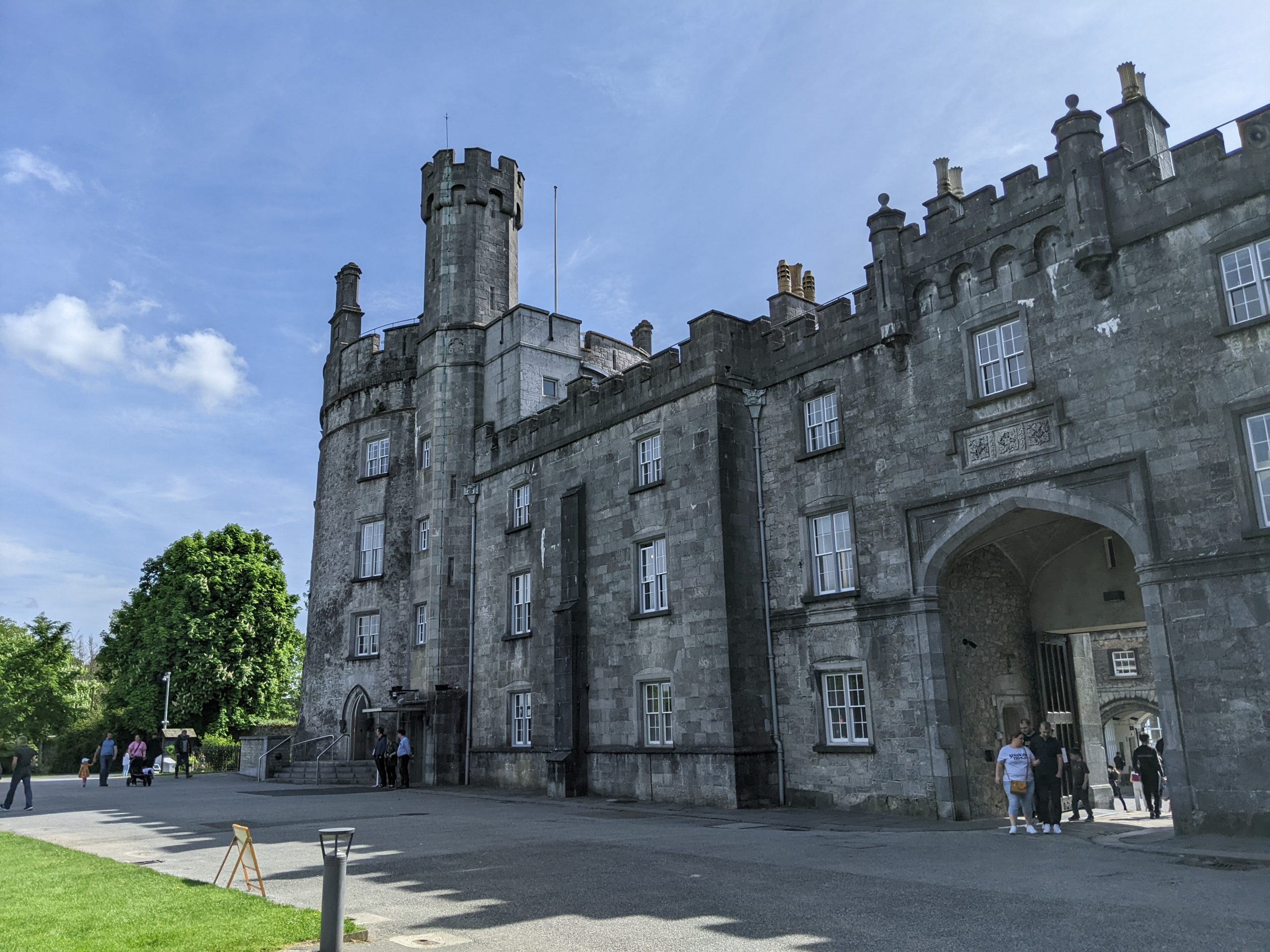The best tourist locations in Ireland: where to go and what to see on the Emerald Isle. Part 2.
1. Giant’s Causeway
The Giant’s Causeway (Irish: Clochán an Aifir) is a unique geological formation and one of the most famous natural wonders of Northern Ireland. It is located on the north-east coast of the island, in County Antrim, about 3 km from the town of Bushmills.
Giant’s Causeway is a massif of about 40,000 basalt columns formed by a volcanic eruption about 50-60 million years ago. Most of the columns are hexagonal, but there are also pentagonal, heptagonal and octagonal ones. They create the impression of a causeway leading into the sea.
The tallest columns reach 12 meters, and at the bottom they form natural platforms on which you can walk. The entire area of the “Trail” is protected by UNESCO as a World Heritage Site.
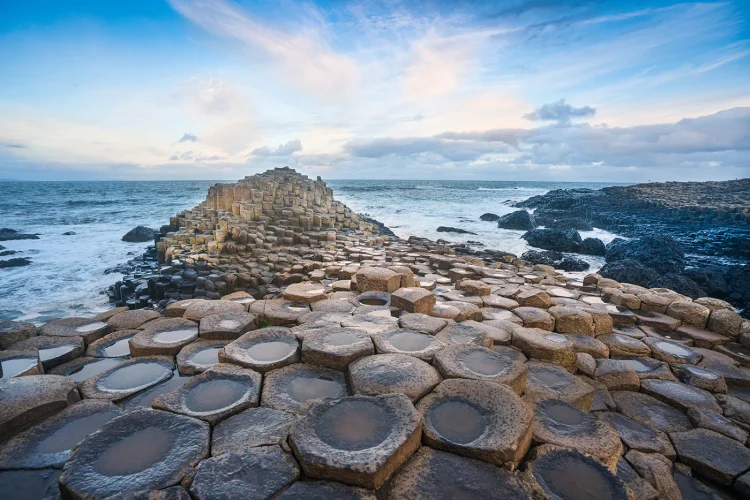
Legend:
According to Celtic mythology, the Causeway was built by the giant Finn McCool to cross the sea to Scotland and challenge another giant, Benandonner. When Finn realized that his opponent was too big, he disguised himself as a baby. Benandonner, deciding that if the baby was so big, then the father was enormous, ran back to Scotland, destroying the bridge behind him.
What to see:
- The Giant’s Boot, Giant’s Organ, Chimney Stacks are separate sections with characteristic names and shapes.
- The Giant’s Causeway Visitor Centre – with interactive exhibits, a cafe, a gift shop and a viewing platform.
- Walking trails – with varying levels of difficulty and stunning views of the coast.
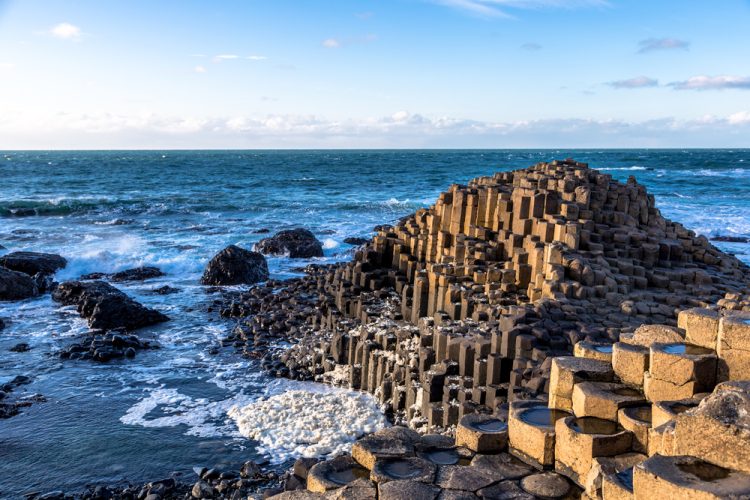
For reference:
- Shuttle bus – runs from the center to the cliffs themselves if you don’t want to walk (about 1 km each way).
- Location: about 1.5 hours drive from Belfast or 3 hours from Dublin.
- Entrance to the trail is free, but there is a charge for parking and access to the visitor center.
- Comfortable shoes and protection from rain are recommended – the weather on the coast is changeable.
2. Dingle and the Dingle Peninsula
Dingle is a small coastal town and the cultural centre of the Dingle Peninsula, one of the most picturesque and distinctive regions of Ireland. Situated in County Kerry, on the country’s south-west coast, it boasts a mix of Celtic heritage, wildlife and traditional ways of life.
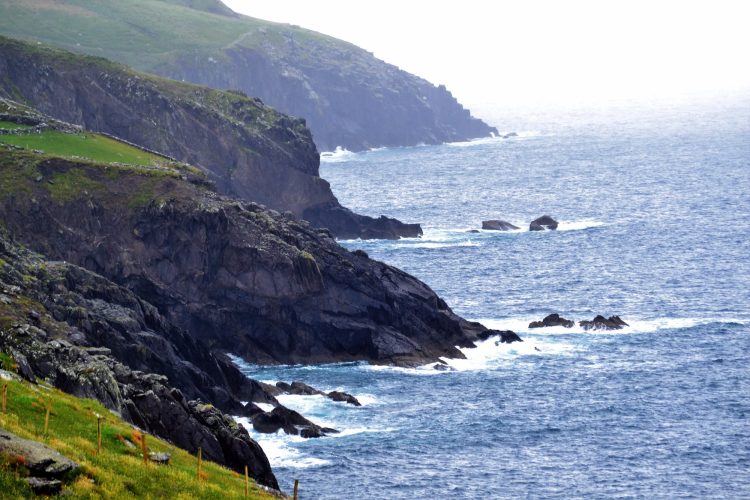

Dingle Town:
- Uspopulation: about 2,000.
- It is part of the Gaeltacht, regions where the Irish language is widely used in everyday life.
- It is known as a fishing port and a tourist centre.
- Dingle is famous worldwide for Fangie the Dolphin, a friendly wild dolphin who lived off the harbour shores for over 30 years.
What to see in the city:
- A bustling seafront with seafood restaurants, pubs and boat tours.
- Oceanworld Aquarium – an aquarium with Atlantic marine life.
- Local art galleries and craft workshops.
- Pubs with live traditional music, especially Dick Mack’s Pub and O’Sullivan’s Court House.
Dingle Peninsula:
The peninsula extends far into the Atlantic and is surrounded by rocky shores, sandy beaches and green hills. This is one of the last places where Celtic culture is preserved in everyday life, language and traditions.
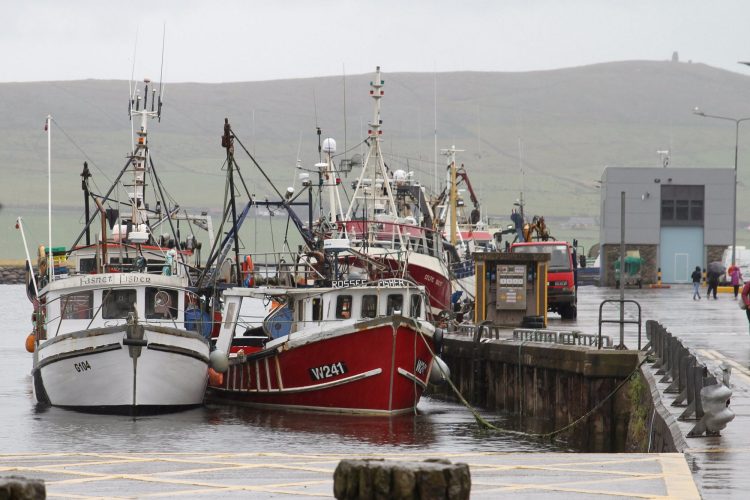
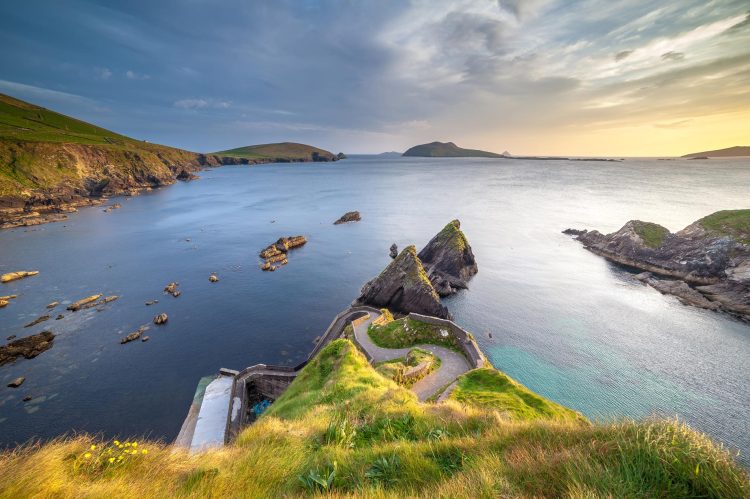
Main attractions:
Mount Brandon: one of the highest peaks in Ireland, popular with pilgrims and tourists.
Slea Head Drive: a scenic ring road along the edge of cliffs. It offers spectacular views of the ocean, the Blasket Islands and ancient buildings.
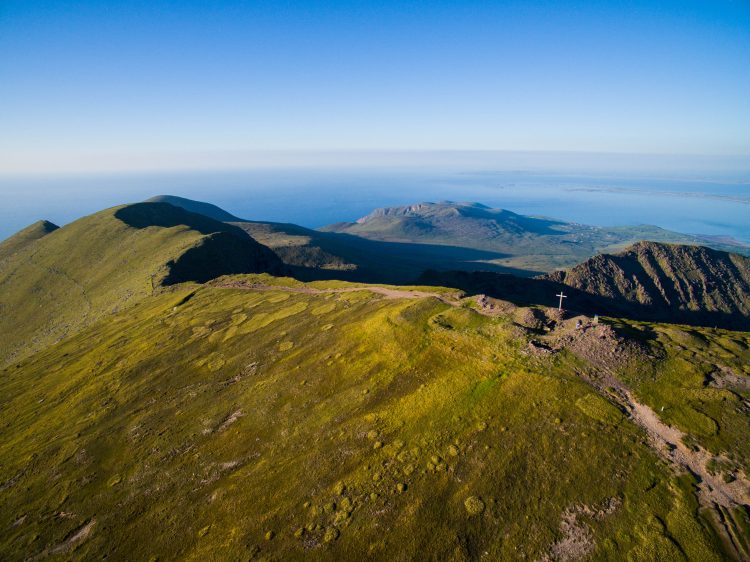
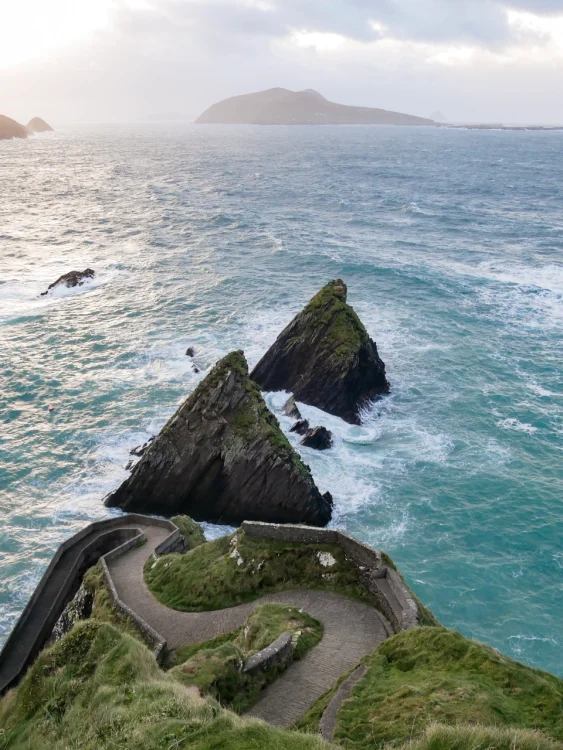
Useful information:
- Dingle is one of the stops on the Wild Atlantic Way, a tourist route along the west coast of Ireland.
- Suitable for traveling by car or bike.
- The region is active in Gaelic schools, folklore and traditional crafts.
- Best time to visit: May to September, when the weather is milder and the trails are accessible.
4. City of Derry
The City of Derry, also known as Londonderry, is one of the oldest cities in Northern Ireland, with a rich history and cultural heritage. Derry is located on the River Foyle in County Londonderry, near the border with Ireland.
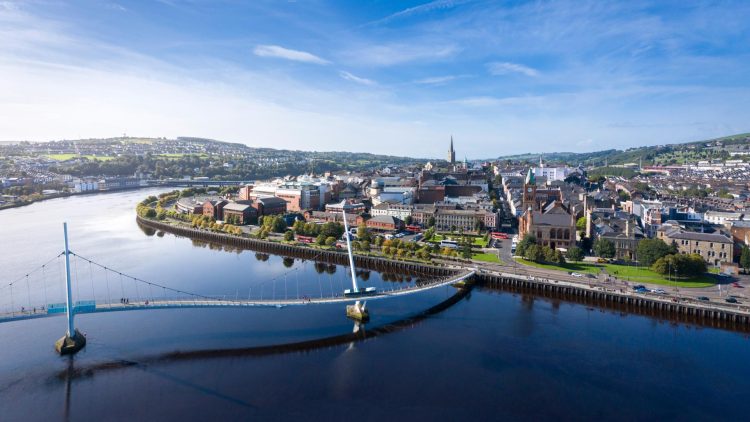
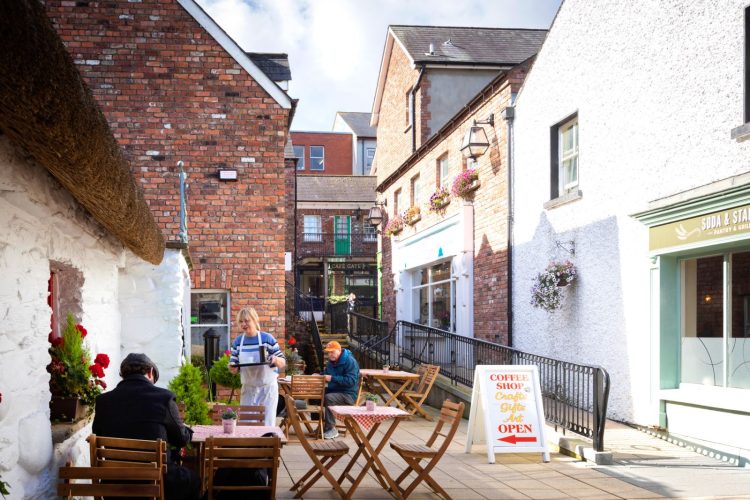
General information:
- Population: about 110,000 people.
- The second largest city in Northern Ireland after Belfast.
- The official name is Londonderry (used by British institutions), but most locals and Irish people prefer Derry.
- The name comes from the Irish Doire, meaning “oak grove.”
Historical significance:
Derry is famous for its city walls, built between 1613 and 1619. These are the only fully preserved fortified walls in Ireland that you can freely walk along. They symbolize the Protestant foundation of the city as part of the English colonization of Ulster.
Key historical events:
The Siege of Derry (1689) was one of the key episodes of the Williamite War between Protestants and Catholics.
The Troubles — the city became one of the hotbeds of tension. The most notable event was the Bloody Sunday massacre in 1972, when British soldiers shot dead 14 peaceful protesters.
What to see:
- City Walls – a 1.5 km walk around the perimeter of the old city.
- Peace Bridge – a modern pedestrian bridge symbolizing reconciliation between the city’s communities.
- Guildhall – a Victorian Gothic building with stained glass windows, exhibitions and cultural events.
- St. Columb’s Cathedral Cathedral) is the oldest Protestant building in Northern Ireland.
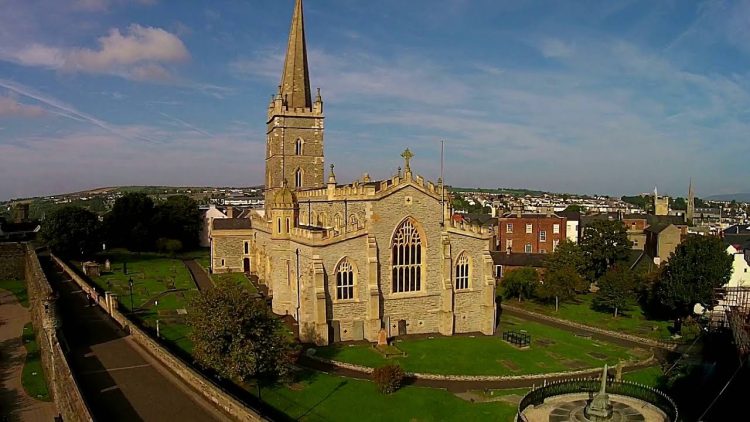
For reference:
The city is conveniently located for trips around north-west Ireland – to the coast of County Donegal, the Atlantic Way and natural attractions.
Accessible by bus and train from Belfast, as well as via the City of Derry Airport.
5. Limerick City
Limerick (Irish: Luimneach) is the third largest city in Ireland, located in the southwest of the country, at the mouth of the Shannon River (Shannon). It is one of the oldest cities in Ireland, combining Viking and Norman heritage, Georgian architecture, industrial history and modern cultural renewal.
Population: about 95,000 people (with suburbs – more than 160,000). The city is divided into the old town, the new center and Thomond (on the north bank of the Shannon). Limerick was founded by the Vikings in the 9th century and became an important Norman stronghold in the 12th century.
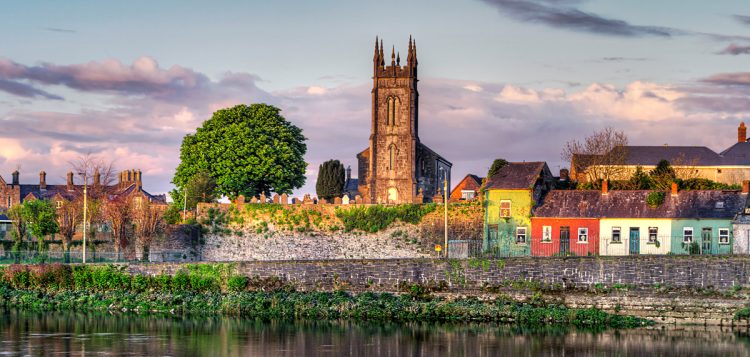
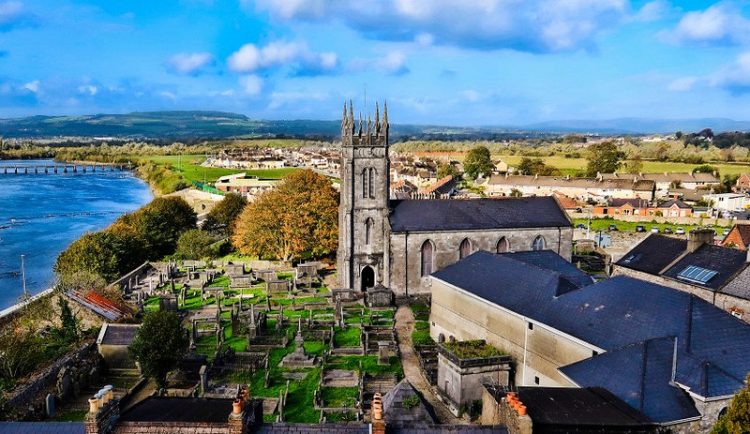
What to see:
🔹 King John’s Castle:
Built in the 13th century by the Normans on the site of an old Viking settlement, it is one of the best preserved castles in Ireland. Inside is an interactive museum with exhibitions, medieval artefacts and views of the river.
🔹 St Mary’s Cathedral:
Founded in 1168, one of the oldest functioning cathedrals in Ireland. An architectural mix of Romanesque and Gothic styles.
🔹 Hunt Museum:
Housed in the old customs house. A collection of artefacts from antiquity to the 20th century, including works by Picasso, Da Vinci and Irish masters.
🔹 Georgian Quarter:
Streets of the 18th and 19th centuries with elegant architecture. A center of artistic life, galleries and boutiques.
The city is famous for its poetry and literature, including thanks to Frank McCourt, author of the autobiographical novel “Angela’s Ashes”, which is set in Limerick. Limerick is one of the centers of rugby in Ireland, home to Munster Rugby Club. Matches are held at Thomond Park stadium.
Interesting places and features:
- River Shannon — the longest river in Ireland, flows through the city, you can also book a river cruise here.
- People’s Park — the main city park with fountains and statues.
- Milk Market — a lively market with food, crafts and street food.
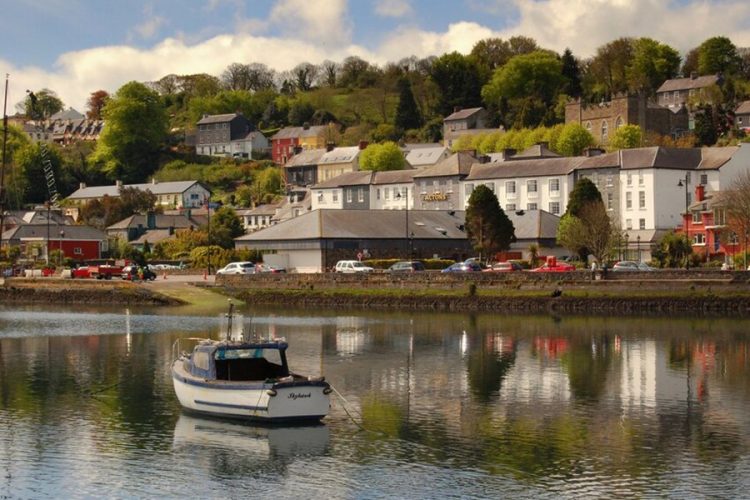
Amenities and transport:
- Located approximately 2 hours from Dublin, 1 hour from Galway and 1.5 hours from Kerry.
- There are rail links and bus routes throughout the country.
- Shannon Airport is 25 minutes from the city center.
6. Kilkenny City
Kilkenny (Irish: Cill Chainnigh – “Church of Cannech”) is a picturesque medieval city in the southeastern part of Ireland, in County Kilkenny. It is renowned for its well-preserved architecture, history, culture and reputation as the cultural capital of Ireland. Also, Kilkenny is the former real capital of Ireland.
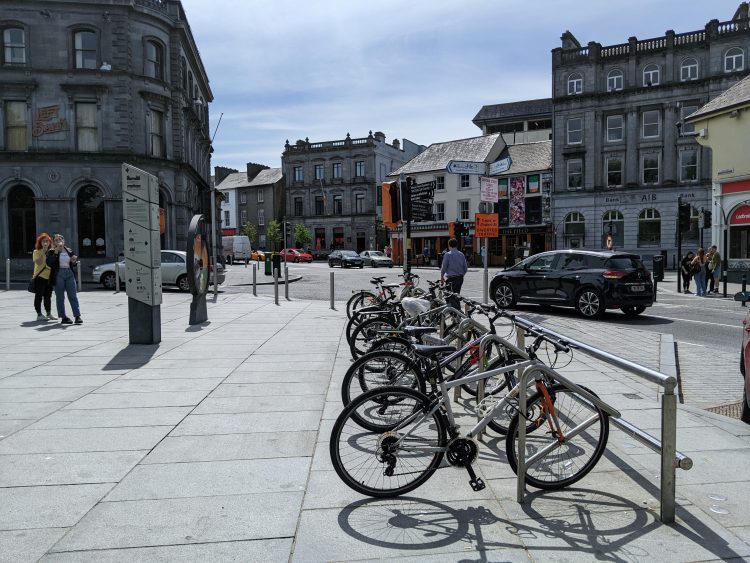
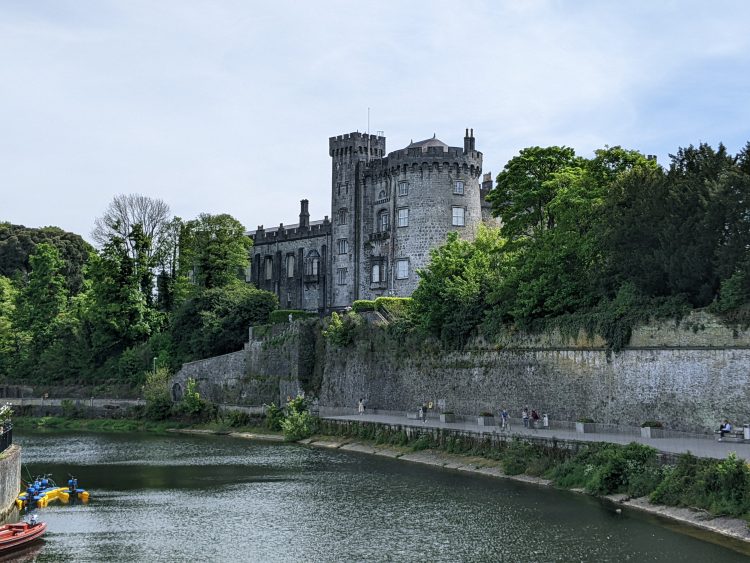
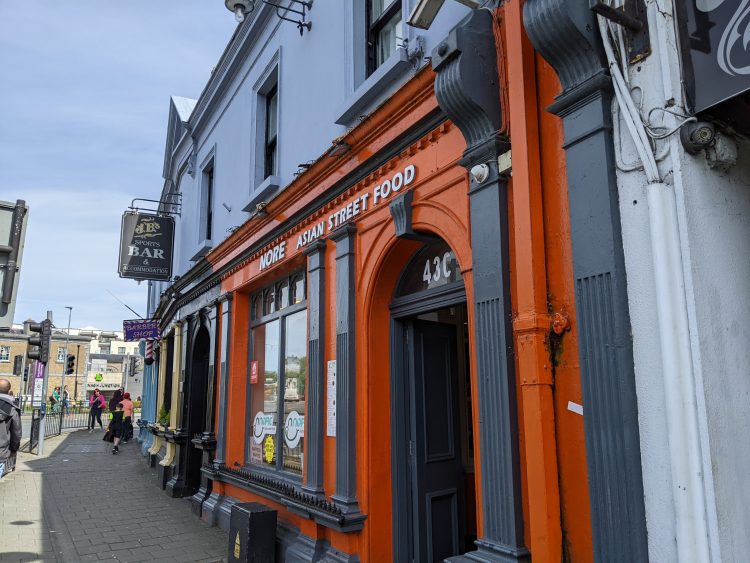
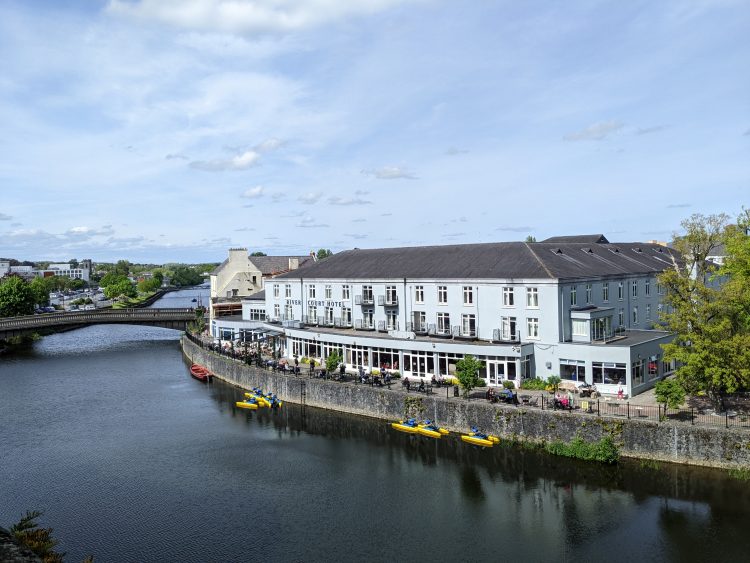
The historical center of Ireland:
Kilkenny is one of the bestone of the country’s surviving medieval cities. Its narrow streets, stone buildings and Gothic cathedrals immerse you in the atmosphere of the Middle Ages. It is a city of crafts, music and theatre.
Foundation: 7th century as a monastic settlement. In the 13th century it became the main administrative centre of Norman Ireland. In 1642, the Confederate Parliament met here, an attempt at Irish self-government during the Irish Civil War.
Main attractions:
🔹 Kilkenny Castle:
- Built in 1195 by the Anglo-Normans.
- It was the seat of the powerful Butler family for over 500 years.
- Today it is open to visitors: interiors, art gallery, park.
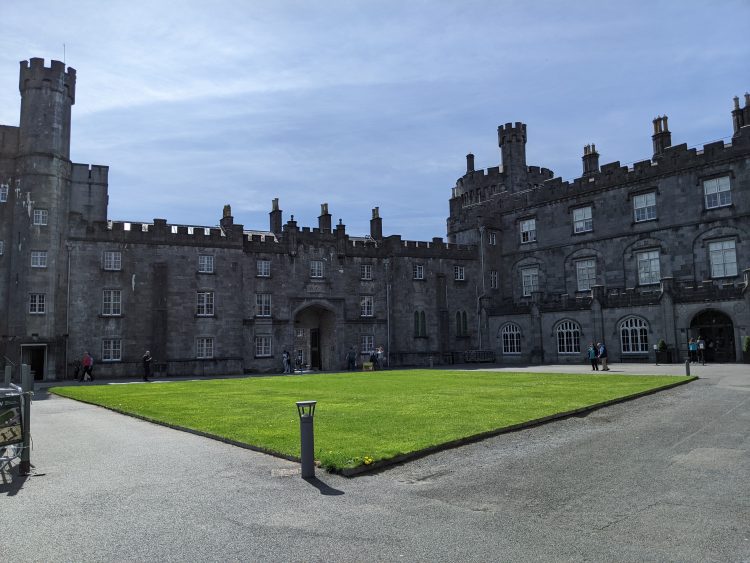
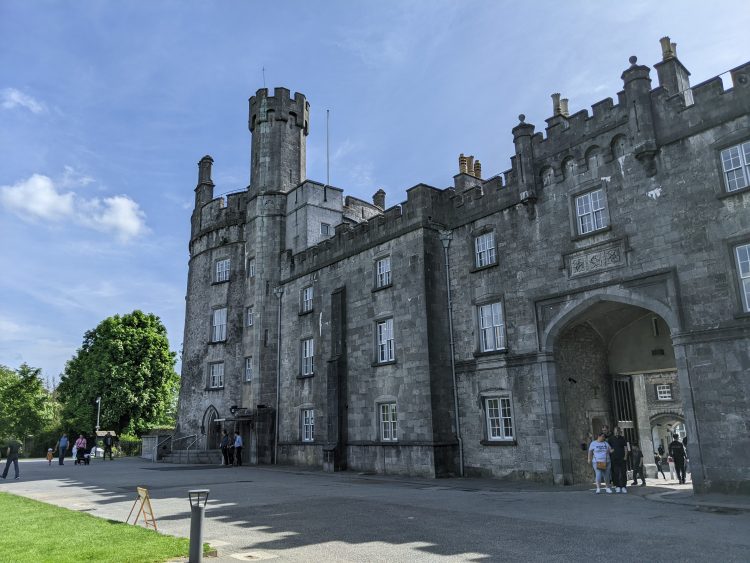
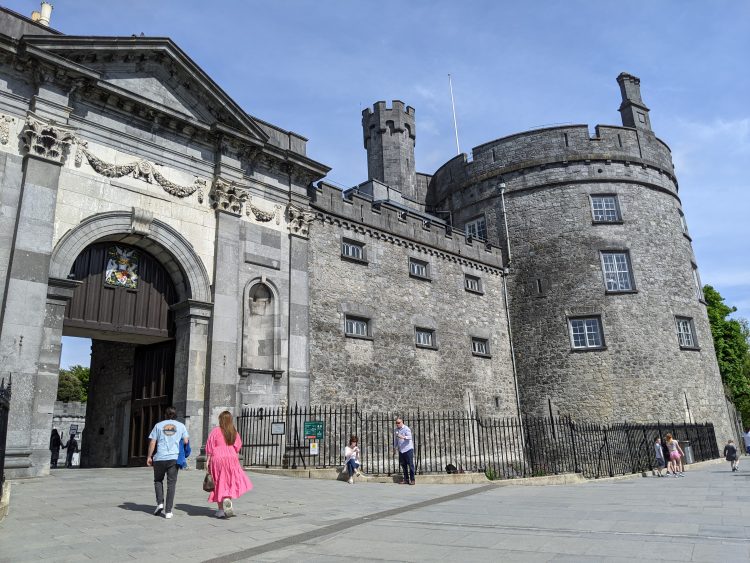
🔹 St Canice’s Cathedral:
- Built in the 13th century on the site of a 7th-century monastery.
- Nearby is the Round Tower, which you can climb to admire the view of the city.
🔹 Black Abbey Monastery:
- A 13th-century Dominican monastery with original stained glass windows and Gothic architecture.
🔹 Rothe House:
- A 16th-century merchant’s house, museum, courtyard and restored Tudor garden.
- Galleries, boutiques, pubs with live music and traditional cuisine make the city cozy and lively.
Brewing and gastronomy:
The famous Kilkenny beer is brewed here, as is Smithwick’s Ale, one of the oldest brands of ale in Ireland (founded in 1710). Smithwick’s Experience — an interactive tour of the historic brewery.
What else to see:
- A walk along the Medieval Mile — a route connecting key medieval monuments.
- Butter Slip — a narrow stone alley from the 17th century, hidden between buildings.
- Parks, a castle garden, handicraft shops and coffee shops in historic buildings.
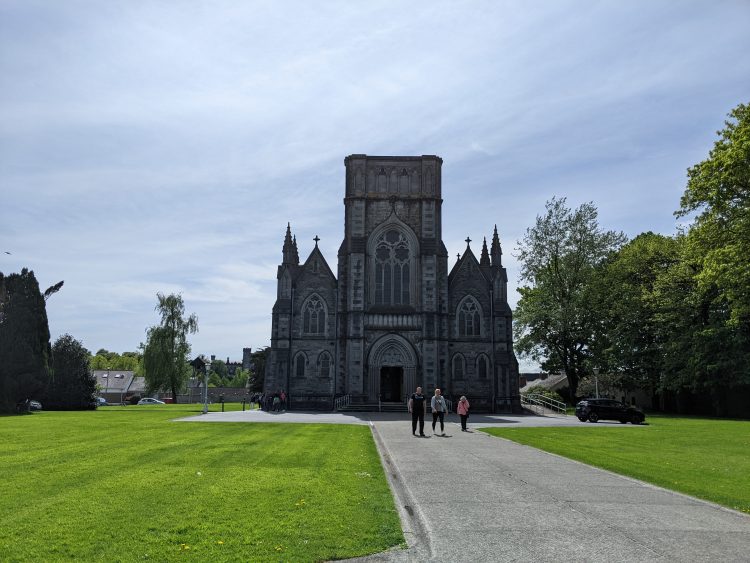
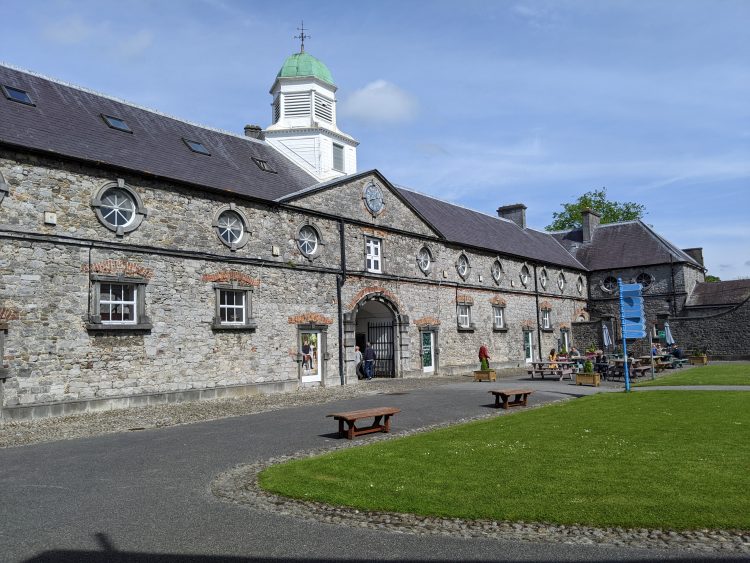
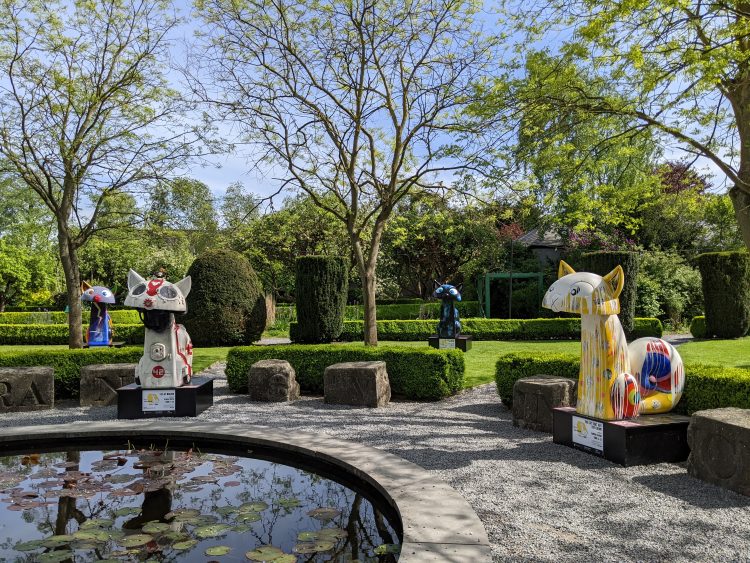
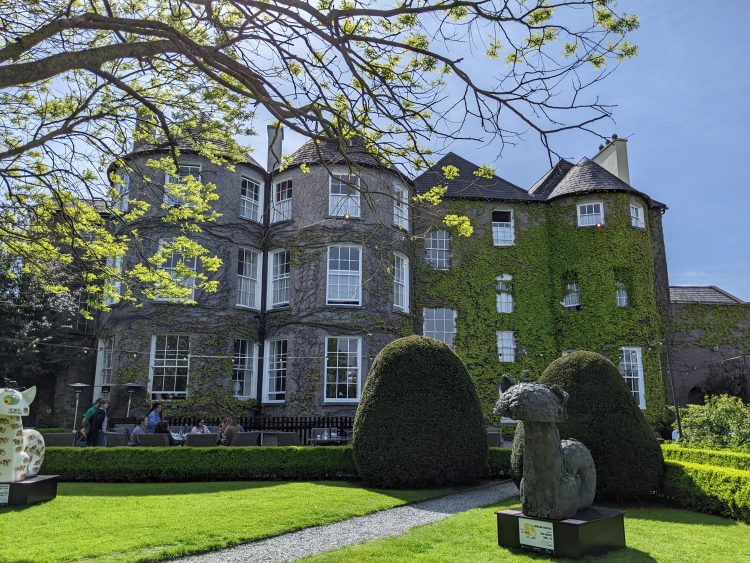
Accessibility:
- Located 1.5 hours drive from Dublin (by car or train).
- Good transport links to other cities in the southeast: Waterford, Carlow, Cashel.
7. Westport
Westport (Irish: Cathair na Mart — “town of trading cattle”) is a picturesque town on the west coast of Ireland, in County Mayo. It is one of the neatest, most well-kept and most tourist-attractive small towns in the country, combining nature, history and an authentic atmosphere.
General information:
- Population: about 6,000 people.
- Located at the foot of Croagh Patrick and on the shores of Clew Bay, dotted with more than 300 islets.
- The city layout is made in the Georgian style of the 18th century — with symmetrical streets, canals and stone bridges.
Main attractions:
🔹 Westport House
A magnificent 18th-century estate built on the site of the castle of the famous pirate Grace O’Malley. Inside there is antique furniture, art exhibits, and around there is a park, rides, a mini-zoo and an embankment.
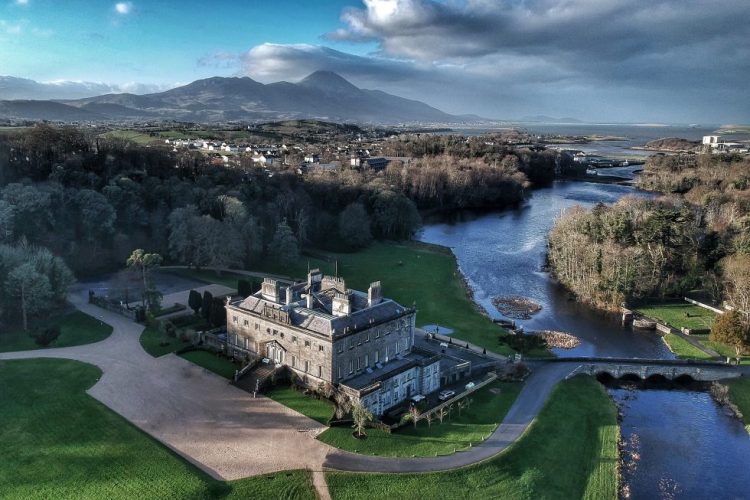
🔹 The Octagon
The central square of the city with an octagonal monument to King George III. The main streets with shops, restaurants and pubs branch off from it.
🔹 Croagh Patrick
The sacred mountain of Ireland (764 m). According to legend, St. Patrick prayed here for 40 days. The climb to the summit is popular with both pilgrims and tourists, thanks to the stunning views of Clew Bay.

🔹 Great Western Greenway
A 42-kilometre walking and cycling trail. It follows the old railway route from Westport to Achill Island. Ideal for exploring the wildlife and coastal scenery of Mayo.
Activities:
- Kayaking, surfing, fishing, sailing in Clew Bay.
- Hiking trails to Croagh Patrick and the coast.
- Trips to Achill Island – Ireland’s largest island.
Infrastructure and transport:
- Rail and bus services to Castlebar, Galway and Dublin (about 3.5 hours from the capital).
- Plenty of hotels, guest houses, campsites and cosy cafes.
- Westport Train Station is the final stop for trains from Dublin.
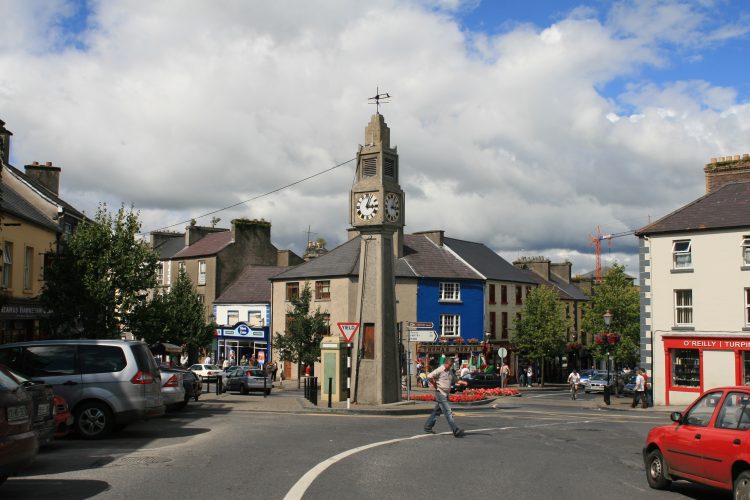
8. Sligo
Sligo (Irish Sligeach) is a picturesque town in the northwest of Ireland, the administrative center of County Sligo. The city lies between the Atlantic Ocean and the lakes of Lough Gill and Lough Arrow, at the foot of the Benbulben and Knocknarea mountains.
General information:
- Population: about 20,000 people.
- Located in the province of Connacht, about 3 hours drive from Dublin.
- The Irish name of the city Sligeach translates as “shell place” – due to the wealth of seafood and river estuaries.
The main attractions of Sligo:
🔹 Benbulben
One of the most recognizable mountains Ireland, with a flat top (“table mountains”). Mount Benbulben has inspired more than one generation of Irish artists. The mountain is popular for hiking, and the summit offers panoramic views of the ocean and valley.
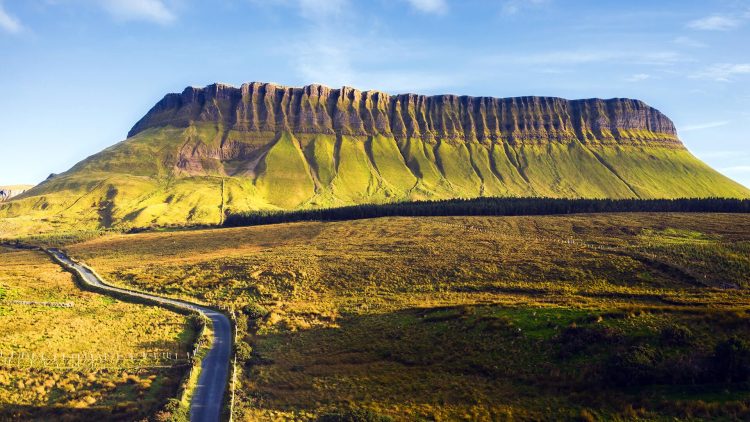
🔹 Knocknarea
An ancient burial mound on the top of a mountain, according to legend – the burial place of Queen Medb (the legendary ruler of Ulster). The walk takes about an hour, and the route offers views of Sligo Bay and the Atlantic.
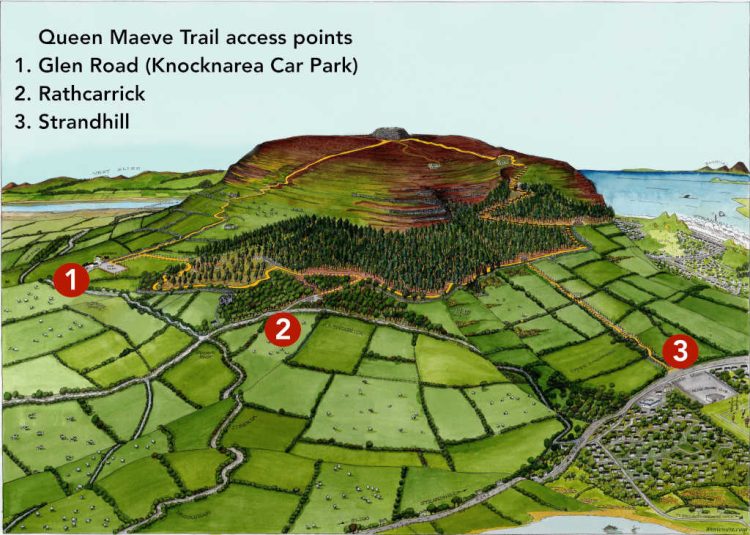
🔹 Sligo Abbey
A 13th-century Dominican abbey with well-preserved arches, tombs and carvings. It is one of the most important medieval monuments in the region.
🔹 Drumcliffe Church & Grave of W.B. Yeats
A 19th-century church at the foot of Benbulben. The local cemetery is the resting place of Nobel laureate W.B. Yeats. His grave with the inscription “Cast a cold Eye / On Life, on Death / Horseman, pass by.” has become a literary shrine.
🔹 Lough Gill & Lake Isle of Innisfree
A beautiful lake in a wooded valley, with Innisfree Island – the very one Yeats wrote about in his famous poem “The Lake Isle of Innisfree”. Boat trips and walking tours along the shore are also permitted here.
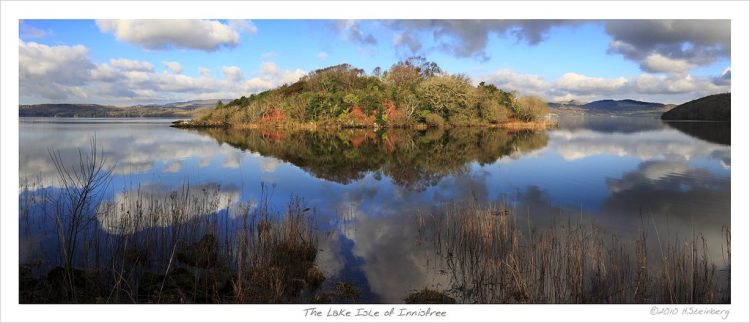
Active recreation and surfing:
Strandhill and Enniscrone are the two main resort villages near the city.
Popular activities here:
- Surfing (including lessons for beginners)
- Seaweed Baths
Additional:
- Carrowmore Megalithic Cemetery is one of the largest Neolithic complexes in Ireland, with dolmens and burial mounds dating back about 5,000 years.
- Glencar Waterfall is a picturesque waterfall 15 minutes’ drive from the city.
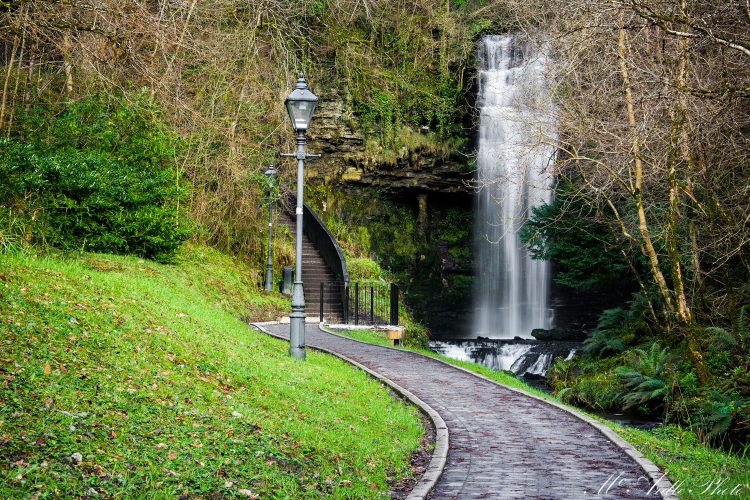
Transport and accessibility:
- Direct train service to Dublin (approx. 3 hours).
- Bus service to Galway, Derry and other cities.
- The city is easy to explore on foot; car rental is useful for trips to natural monuments.
9. Coleraine
Coleraine — a small but important town in Northern Ireland, situated in County Londonderry, on the banks of the River Bann, close to the north coast. It is considered one of the main centres of the Causeway Coast region, due to its location near natural and cultural attractions.
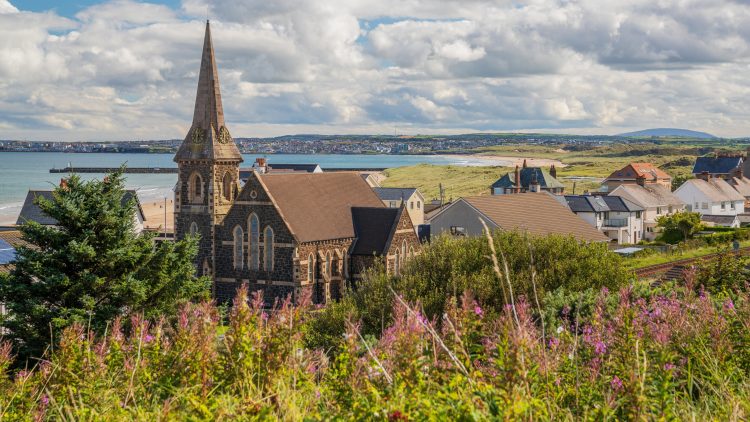
General information:
- Population: about 25,000 people.
- The town stands on a bridge over the River Bann, the longest river in Northern Ireland.
- The history of the settlement goes back to the Neolithic period – nearby there are archaeological sites over 6,000 years old. years.
What to see in the city itself:
🔹 The Central Square (The Diamond)
The heart of the city with shops, cafes, banks and a lively city life. Markets and seasonal fairs are held here.
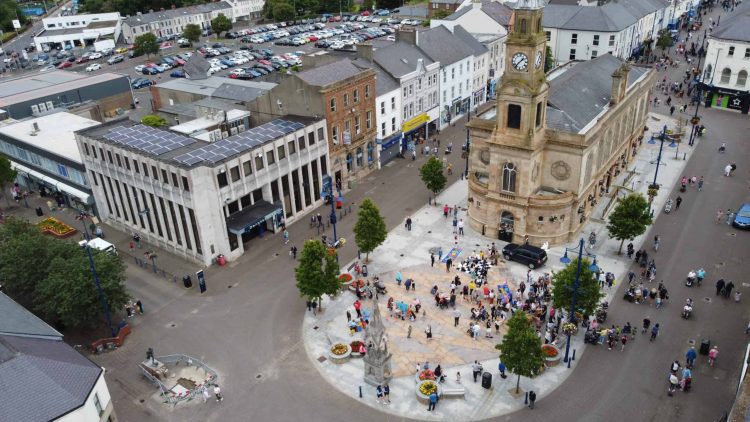
🔹 Ulster University
One of the campuses of Northern Ireland’s leading university. It gives the city a student atmosphere.
🔹 Coleraine Railway Station
A convenient starting point for trips around coastline, particularly Portrush and Derry, a route renowned as one of the most scenic in the UK.
Outdoors and Nature
Coleraine is an ideal base for exploring the coastline:
🔹 Giant’s Causeway
A famous natural wonder of around 40,000 basalt columns formed by an ancient volcano. It is a UNESCO World Heritage Site. Situated approximately 15 km from Coleraine.
🔹 Dunluce Castle
The ruins of a 13th-century castle, picturesquely standing on a cliff by the sea. Often used in films and TV series (e.g. Game of Thrones).
🔹 Carrick-a-Rede Rope Bridge
A suspension bridge over a chasm by the sea, one of the most popular places for a walk with views of the coast.
🔹 Portstewart & Portrush Beaches
Wide sandy beaches, surfing, golf, cafes and traditional Irish entertainment. In summer – lively resorts.
Shopping and food:
- Coleraine Retail Park and Diamond Shopping Centre are large shopping areas.
- Cafes and pubs with local dishes, including fish and seafood.
- Markets and farmers’ stalls offer local produce.
Transport:
- Rail links to Belfast, Derry and the coast.
- Good bus services all along the North Coast.
- The city is convenient for travel by car: you canbut in one day you can drive almost the entire Antrim coast.
10. Kinsale
Kinsale is a picturesque port town in the south of Ireland, in County Cork, located at the mouth of the Bandon River. It is one of Ireland’s most charming and gastronomically renowned towns, combining vibrant architecture, maritime history and exquisite cuisine.
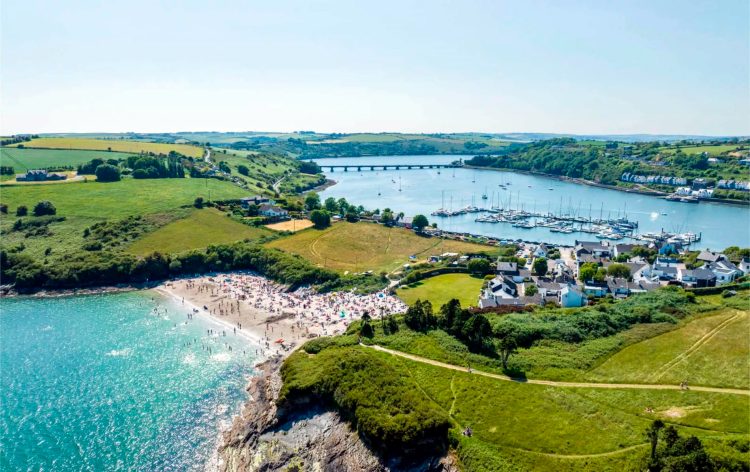
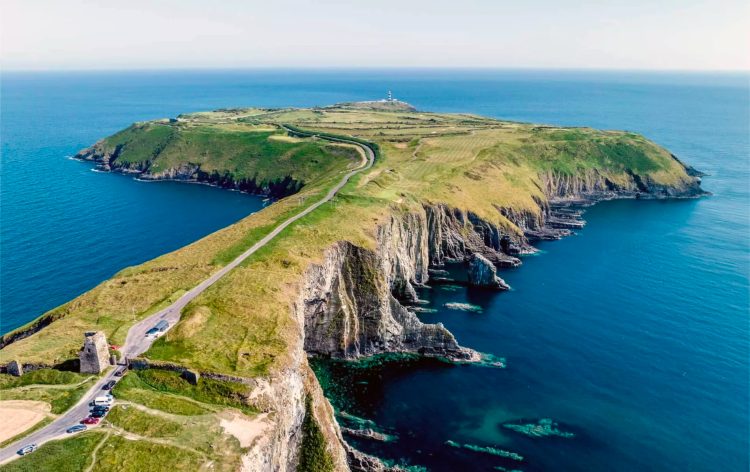
General information:
- Population: about 5,000 people.
- Located about 25 km south of the city of Cork.
- Known as the “culinary capital of Ireland“, as well as a historic port with a rich past.
Main attractions:
🔹 Charles Fort
A massive star-shaped fortification from the 17th century, built to protect the harbour. Today it is an open-air museum with views of Kinsale and the Atlantic.
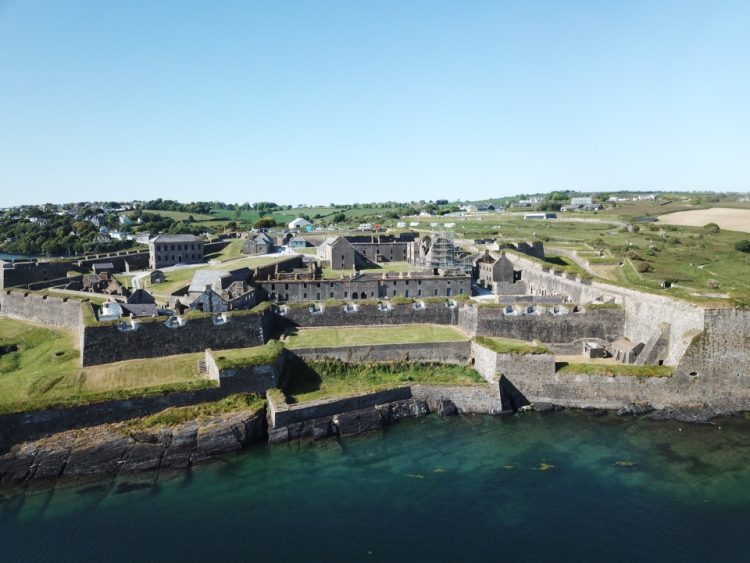
🔹 James Fort
An older fortification from the 16th century on the opposite bank of the bay. Less restored, but no less picturesque.
🔹 St. Multose Church
One of the oldest functioning churches in Ireland (founded in 1190). Its walls contain traces of Norman architecture and ancient tombstones.
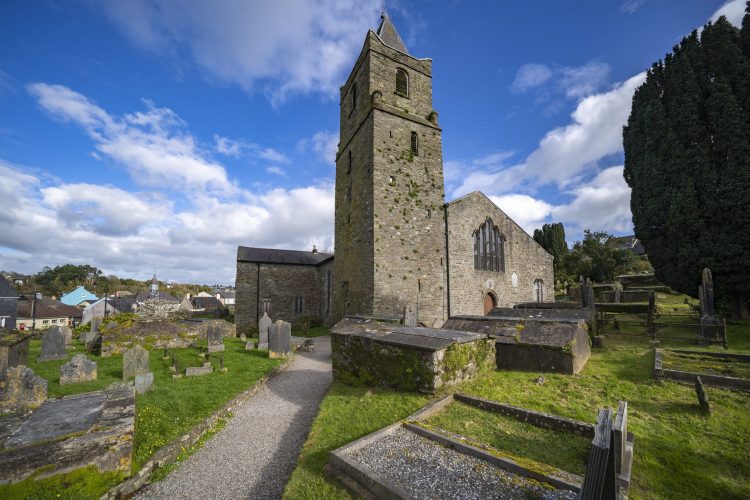
Historical significance:
Kinsale is remembered in history for the Battle of Kinsale in 1601, a key battle between Irish rebels, Spanish allies and English troops. This event is considered a turning point in Irish history, leading to the final Anglo-Norman victory over the Gaelic lords.
Gastronomy:
The town of Kinsale has earned a reputation as a centre for seafood and fine dining:
- Famous restaurants: Fishy Fishy, Max’s, The Bulman Bar & Restaurant.
- The annual Kinsale Gourmet Festival is held, where chefs and gourmets from all over Ireland meet.
- A lot of cozy cafes, bakeries and pubs with local flavor.
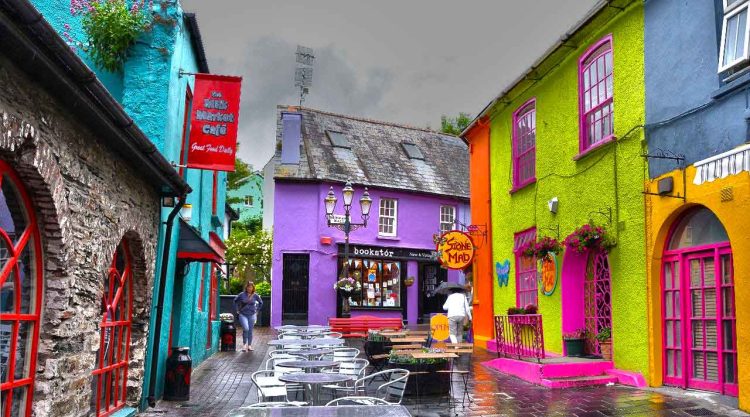
Entertainment and recreation:
- Boat trips, fishing, sailing.
- Walking trails along the coast, especially to Charles Fort.
- Galleries, boutiques, craft and delicatessen shops.
Cultural atmosphere:
- Brightly coloured houses and shop windows are the city’s calling card.
- Art exhibitions, street musicians, festivals.
- Local pubs offer live Irish music in an authentic setting.
Transportation and accessibility:
- Kinsale is easily accessible by bus or car from Cork (approximately 30-40 minutes).
- The town is compact and ideal for exploring on foot.
- Cork Airport is nearby.
11. Connemara Loop
The Connemara Loop is a scenic road trip through one of the wildest and most beautiful corners of Ireland, the Connemara region in western County Galway. The route takes in a circular route through mountains, lakes, coastal villages and a national park. Connemara Loop is considered one of the most breathtakingly beautiful road trips in the country.
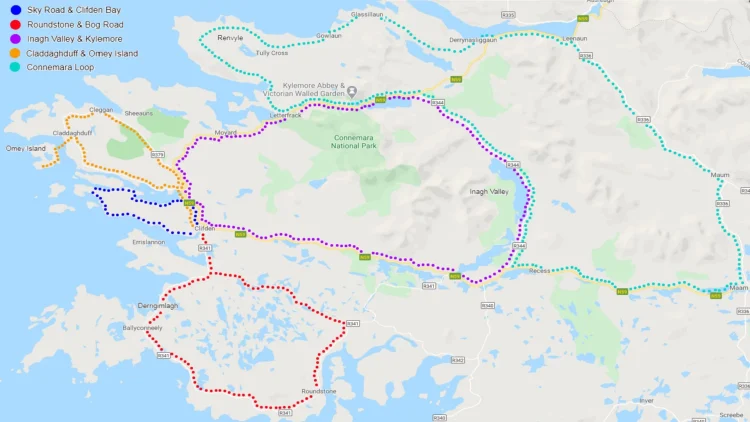
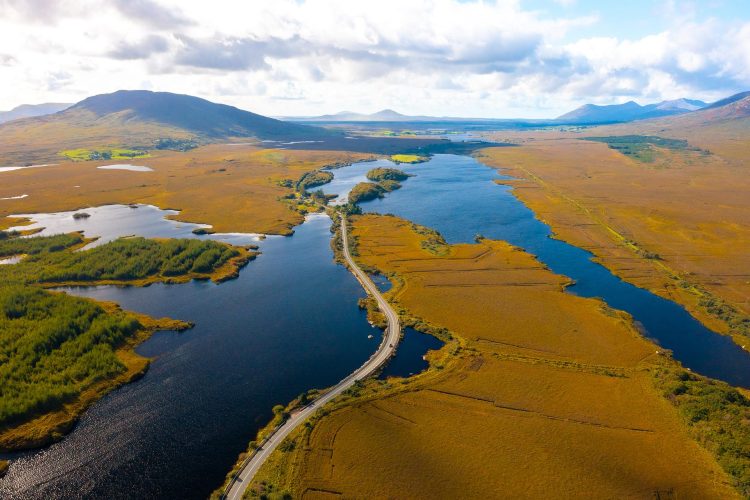
General information:
- Route length: about 85 km (depending on the detour option).
- Starting point – the village of Clifden or Letterfrack.
- Often seen as a branch of the Wild Atlantic Way route.
- Ideal for traveling by car, motorcycle or bicycle, with numerous stops.
Main points of the route:
🔹 Clifden
The informal ‘capital’ of Connemara, famous for its craft shops, live music pubs and views over Clifden Bay. A great base for a trip.
🔹 Sky Road
A panoramic road west of Clwenach. One of the most photogenic sections of the Loop, with views across the Atlantic, islands, ruins and pastures.
🔹 Connemara National Park
One of the main natural gems of the route. Offers walking trails across peat bogs, hills and to the summit of Diamond Hill. The visitor centre is in Letterfrack.
🔹 Kylemore Abbey
A picturesque neo-Gothic abbey at the foot of the Twelve Bens, reflected in Lake Pollacappul. Formerly a private residence, now a monastery with gardens and a museum.
🔹 Renvyle
A peninsula with beaches, lighthouses and views of the islands. A great place to stay overnight or enjoy a stroll by the water.
🔹 Tullamore
A charming village with traditional thatched cottages, pubs and fetes. Folklore nights are often held here.
🔹 Killary Harbour
Ireland’s only fjord is a narrow inlet that juts deep into the land. You can take a boat ride or walk along the shore.
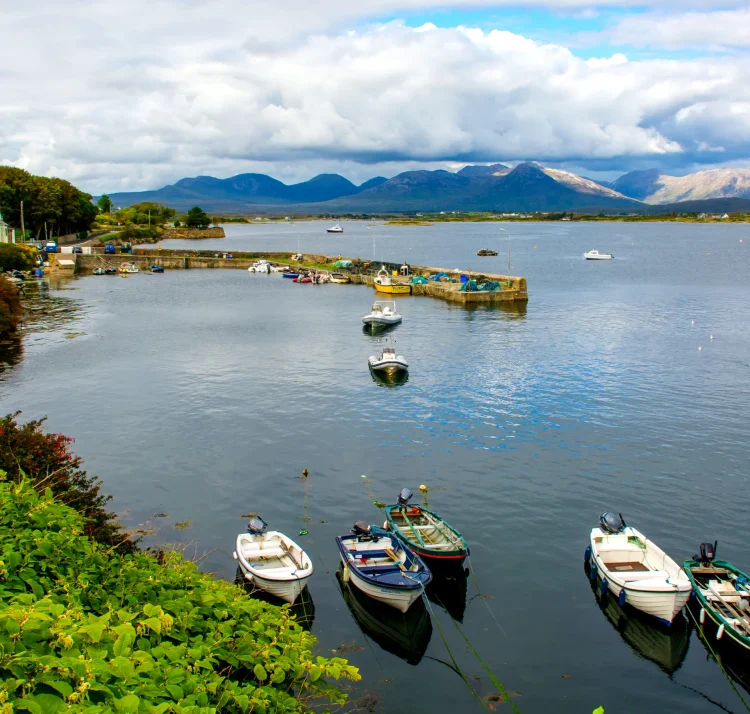
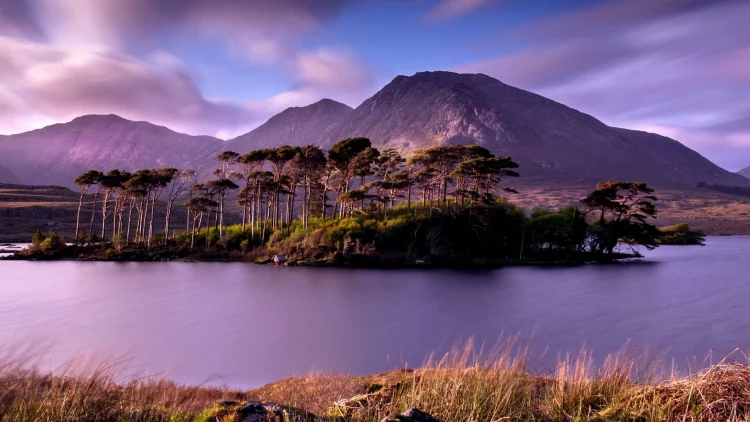
What to expect along the way:
- Narrow roads with stone fences and grazing sheep.
- Constantly changing landscapes: mountains, lakes, peat bogs, ocean.
- Small villages with pubs, craft shops and a fishing atmosphere.
- Low population density and rare tourists – the place retains its authenticity and silence.
Travel tips:
- It is better to drive clockwise, starting from Clifden – it is easier to pull off to the side of the road for photos.
- Spring and autumn are especially picturesque: blooming heather vegetation, clean air, a minimum of people.
- There are small hotels, B&B, campsites along the route.
- Don’t forget to stop for a photo session on Sky Road, especially at sunset.
12. Donegal City
Donegal is a charming town in the northwest of Ireland, located at the foot of the hills and on the shores of Donegal Bay, in the county of the same name – Donegal. Despite its modest size, the city has a strong cultural identity, linked to Celtic heritage, medieval history and incredible natural landscapes.
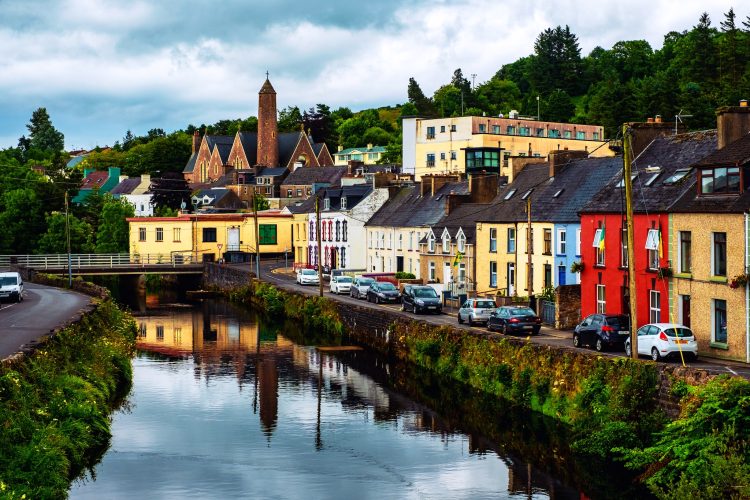
General information:
- Population: about 2,600 people.
- The name comes from the Irish Dún na nGall – “fort of foreigners”.
- The city is considered the unofficial cultural capital of the county of the same name.
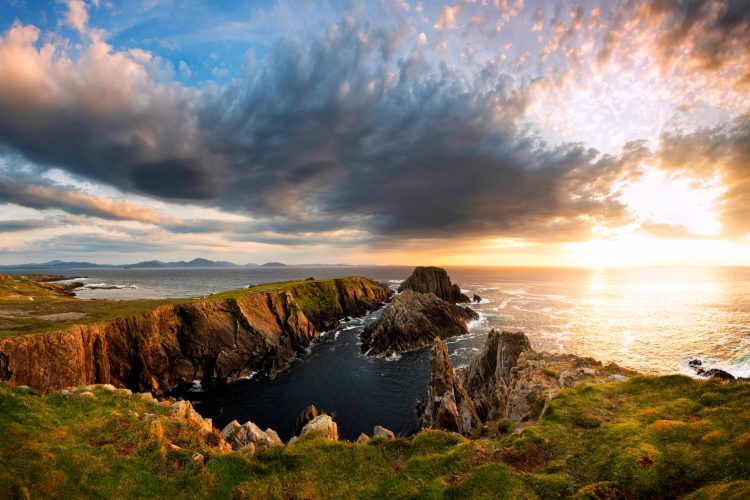
The main attractions of Donegal:
🔹 Donegal Castle
A reconstructed 15th-century castle in the very center of the city. Built by the O’Donnell clan, the rulers of ancient Tyrconnell. A great example of Irish tower architecture combined with Renaissance elements.
🔹 Donegal Friary
The ruins of a Franciscan monastery founded in 1474. The O’Donnells are buried here. The place is quiet, but with a strong historical atmosphere.
🔹 Donegal Craft Village
A complex with workshops of local artists and craftsmen: textiles, ceramics, glassware and leather goods. A great place to buy authentic souvenirs.
Surroundings and nature:
🔹 Donegal Bay
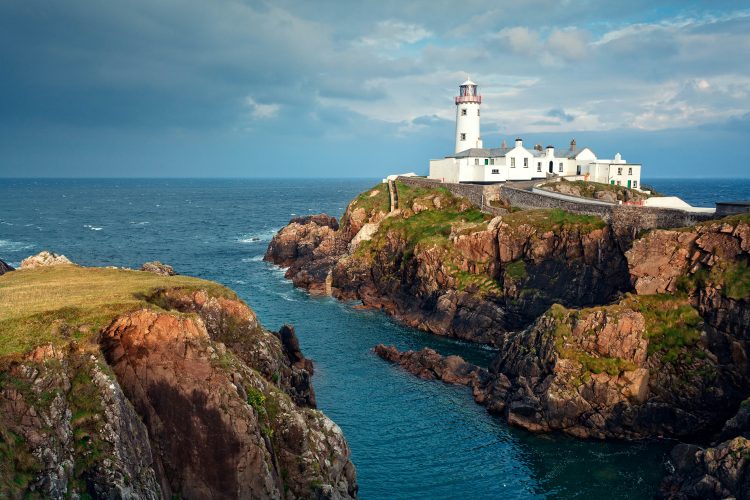
A picturesque harbor with the opportunity to take sea excursions, cruises to Inishsamore Island and seal habitats are especially popular.
🔹 Glenveagh National Park
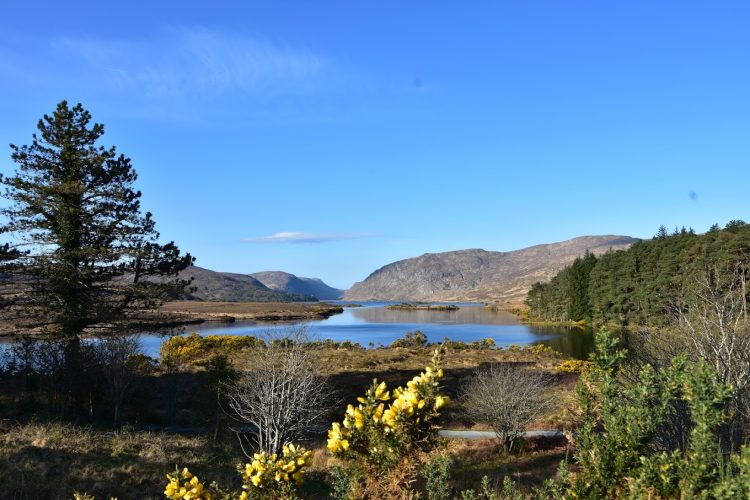
One of the most impressive national parks in Ireland with mountains, lakes and Glenveagh Castle. Located about an hour’s drive from the city.
🔹 Slieve League Cliffs
Some of the highest sea cliffs in Europe (up to 601 m), rising straight from the Atlantic. Less famous than the Cliffs of Moher, but far wilder and more majestic.
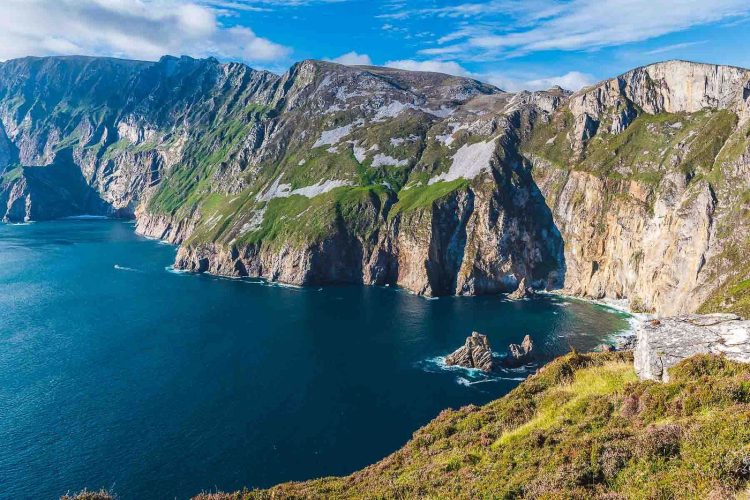
Culture and Traditions:
- Donegal is a centre of traditional Irish music, particularly fiddle music.
- There are regular music sessions in pubs such as The Reel Inn and McCafferty’s.
- The Irish language (Gaeltacht) is still widely spoken in the region.
Fabrics and Textiles:
Donegal is famous for its woollen tweed (Donegal Tweed), which is used to make exported all over the world.
How to get there and what to consider:
- Donegal is conveniently included in the route along the Wild Atlantic Way.
- The city is compact and perfect for walking.
- From here it is easy to get to Arranmore Island and the village of Ardara, another craft center.
Author of the article: Tatiana Senchenko (Dublin)
Source: travelworld.biz

